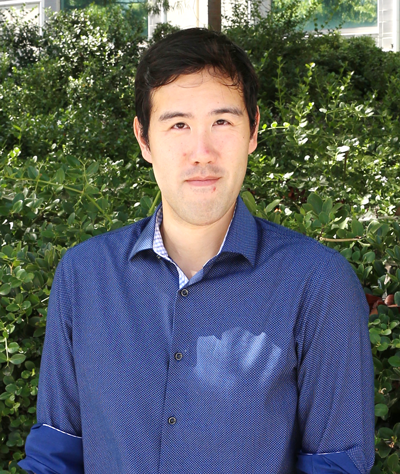Tseng Develops New Interlayer RF Resonators for Wireless Biosensing

Oct. 16, 2020 - Non-invasive, wireless medical devices and biosensors have emerged in recent years as powerful tools to track human performance, individual biological markers and wellness. These small, flexible devices have enabled easy monitoring of physiological parameters, such as heartbeat and glucose levels, but the biosensors in these devices often are large, require a lot of power, and have short life spans and low sensitivity.
Peter Tseng, assistant professor of electrical engineering and computer science, is working to design and develop wireless-enabled passive radio frequency identification device (RFID)-enabled biosensors with programmable sensitivity and selectivity (the ability to differentiate molecules from one another). These sensors will require no electronics at the sensing node, enabling their implantation into a host of new environments and systems. In December 2019, he won a $500,000 CAREER award from the National Science Foundation to develop a multifunctional interlayer-RF resonator as a platform for passive and wireless biosensing.
These new sensors will contain an intermediate layer of nanoporous materials that will absorb, swell or deform in the presence of specific chemical stimuli. This will cause their resonant spectra – or properties, including frequencies – to change, providing enhanced detection mechanisms. Proposed interlayer materials include membranes, separators, deformable materials and temperature/pH/metal-responsive polymers, many of which have long lifetimes and a lack of degradative mechanisms.
The next-generation biosensors will utilize sensing modalities that can support inherent wireless readout and robust, long-term operation. They will be attached, embedded or potentially even implanted, integrating with living systems in new ways and enabling new applications in wireless health, Tseng said.
Tseng will also conduct and analyze theoretical and computational studies on how the unique electromagnetic and bio-interactive physics of specific materials combine to influence sensor performance.
The five-year grant includes an outreach component that focuses on training a new generation of younger, and often underrepresented, students. Skills including fabrication, scanning electron microscopy, experimental methodology, data analysis, modeling and computer-aided design are being incorporated into UC Irvine summer programs like the Samueli School’s FABcamp for middle-school students.
“We are developing next-generation, wireless biosensors with tunable sensitivity and selectivity that can interface with living system,” said Tseng. “This award from the NSF is a huge milestone toward accomplishing our goals.”
– Anna Lynn Spitzer
